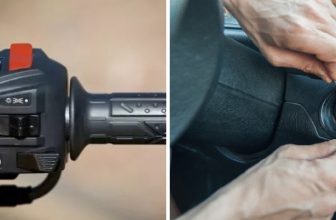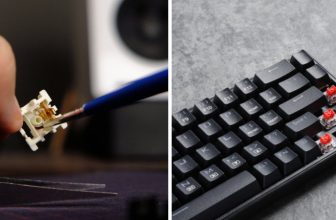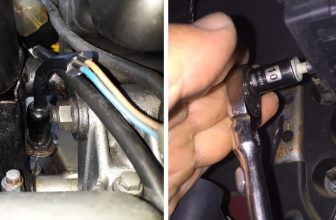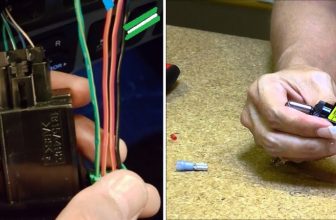How to Connect Generator to House Without Transfer Switch
Are you considering connecting your generator directly to your home’s electrical system but don’t know where to start? It is possible; however, there are certain additional safety considerations when hooking up a generator this way.
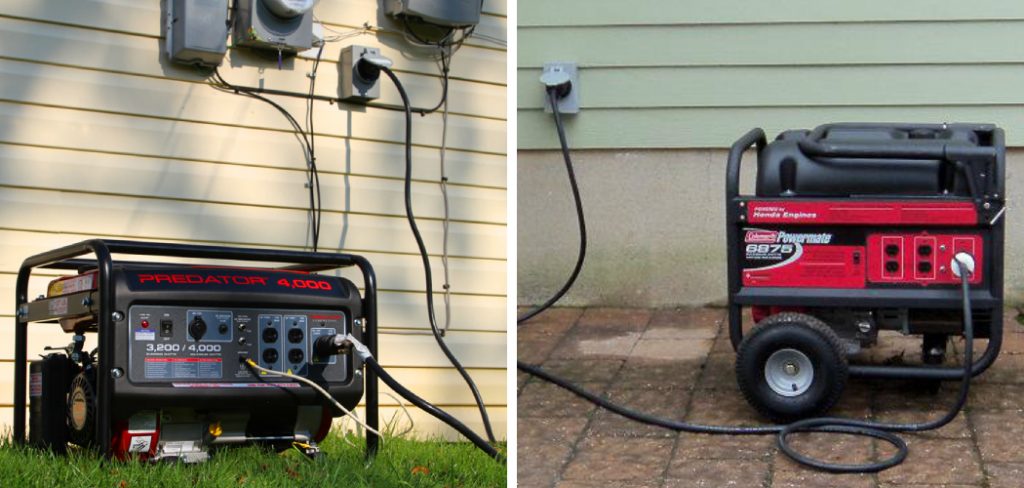
If you are looking to connect a generator directly to your home’s electrical system without using a transfer switch, several important steps must be taken. Doing this the wrong way could lead to unsafe operation and even damage to your equipment.
This article will discuss how to connect generator to house without transfer switch. We’ll also detail safety measures that should always be taken when working with electricity. Keep reading for tips on properly connecting your generator to your home’s electricity without using a transfer switch.
What Will You Need?
Before you connect your generator directly to your home’s electrical system, there are a few key tools and materials that you will need. These include:
- A heavy-duty extension cord
- Electrical disconnects
- A generator with a high power capacity that is compatible with your home’s electrical system
- Safety gear, such as gloves and protective eyewear
- Knowledge and experience working with electrical systems and equipment
Once you have all of the necessary tools and materials, you will be ready to start connecting your generator directly to your home’s electricity without using a transfer switch.
10 Steps on How to Connect Generator to House Without Transfer Switch
Step 1. Locate the Electrical Panel:
Before connecting your generator directly to your home’s electrical system, you must locate your home’s main electrical panel. This is typically located in a closet or basement area and may be secured with a lock, so make sure you have the key handy. Be careful not to damage any of the wires or equipment around the panel when accessing it.
Step 2. Turn Off Power to Your Home:
Before you begin connecting your generator to your home’s electrical system, it is important to ensure that the power is turned off at the main panel. This can be done using a circuit breaker switch or by turning off any individual switches for specific circuits in your home. Don’t forget also to turn off any generator switch controlling power flow.

Step 3. Connect Electrical Disconnects:
Once you have safely turned off the power to your home’s electrical system, it is time to connect a set of electrical disconnects between the generator and your main panel. These will provide a safe way for you to control how much power flows from the generator into your home. Ensure that your disconnects are rated for the voltage and amperage of your electrical system.
Step 4. Check Your Generator for Compatibility:
Before you connect your generator directly to your home’s electrical system, it is important to ensure that it is compatible with the supplied type. If your generator has a lower or higher rating than what is needed for your home, you could damage the equipment or cause unsafe conditions when operating it. You can check your generator’s rating information to determine how much power you can safely put into your home.
Step 5. Connect the Extension Cord:
Once you have confirmed that your generator is compatible with the electrical system in your home, it is time to connect an appropriate extension cord between the two. Choose a heavy-duty extension cord that can handle high current and voltage levels without overheating or damaging. Be careful, as improper connections and faulty cords can lead to serious injuries or fires.
Step 6. Turn on Power and Test Connections:
With the extension cord properly connected between your generator and your home’s electrical system, it is time to turn the power back on at your main panel. Once you have done this, you should test your connections by powering up any electrical equipment in your home. If you notice any unusual smells or sounds during operation or if any sparks are coming from the outlet where you connected the extension cord, immediately shut off power and contact a professional for assistance.
Step 7. Finalize Your Connection:
Once you have successfully tested that all of your connections are working properly and safely, it is time to finalize the connection by securing your extension cord to the electrical panel. Depending on how much power you plan to draw from your generator, you may need to secure additional support or brackets to hold up heavier load cables and wires. You can use standard household tools to complete this step.
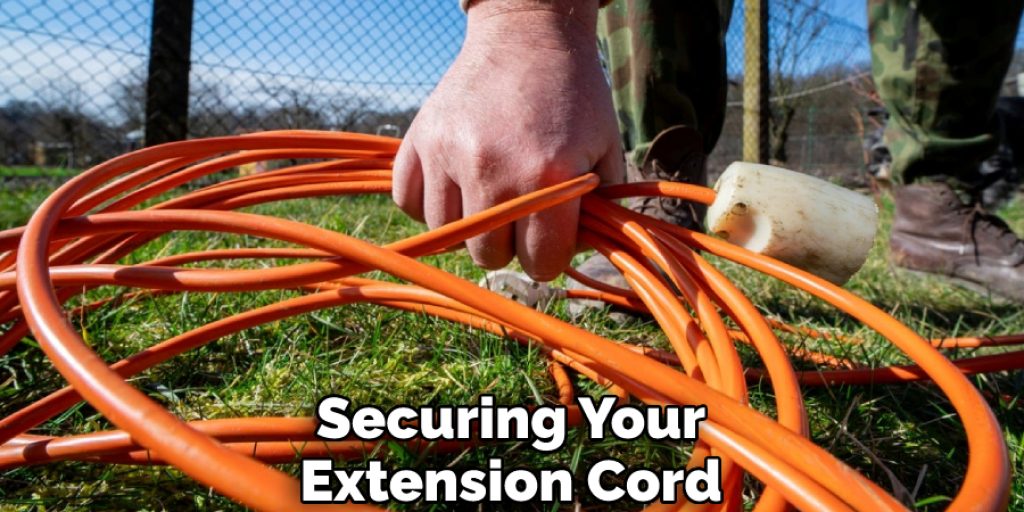
Step 8. Maintain Physical Safety:
While you are working on connecting your generator directly to your home’s electrical system, it is important to take all necessary precautions to keep yourself safe. This includes wearing protective gear such as gloves and eyewear, carefully following all instructions provided by the manufacturer of your equipment, and ensuring that there are no flammable materials or liquids nearby that could catch fire if exposed to sparks or other electrical activity.
Step 9. Monitor Equipment for Any Issues:
As you continue to use your generator to power your home, it is important to monitor the equipment for any issues. This includes watching out for signs of overheating, excess vibrations or sounds, and other unusual activity that could indicate a problem with how your system is functioning. If you notice any problems, immediately shut off the power and contact a professional to help you assess and correct the issue.
Step 10. Clean Up and Maintain Your System:
Once you have finished using your generator to power your home, be sure to clean up any tools or equipment you use and store them properly. You should also check your generator regularly to ensure that it is working smoothly and safely, and contact a professional if you notice any issues or concerns. With proper care and maintenance, you can enjoy peace of mind with a reliable backup power source for your home.
Following these steps, you can safely connect your generator directly to your home’s electrical system and begin using it to power your home during an emergency or blackout situation. With proper care and maintenance, this connection should last for many years without any issues.
5 Additional Tips and Tricks
1. First, ensure your generator is properly grounded and has adequate ventilation. Without these two factors in place, it can be difficult or even dangerous to connect your generator to your house safely.
2. Next, ensure that all the wires and cables you will be using are in good condition and free of any damage or fraying. If any of your wirings is faulty, it is unsafe to use when connecting your generator to your home.
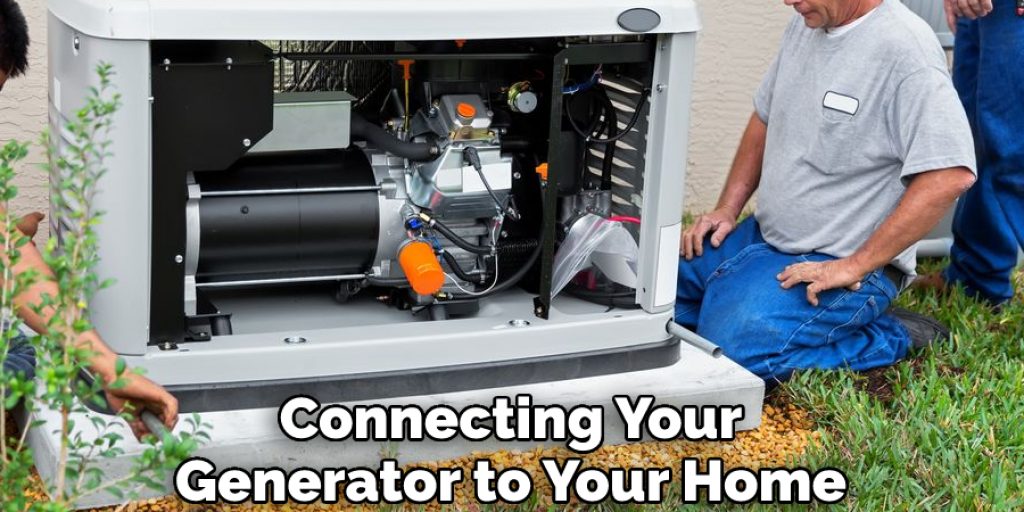
3. To begin the actual connection process, start by laying out all of your cables and wires in an orderly fashion next to each other. This will make it easier to work through the steps involved in connecting your generator safely and effectively.
4. Once you have everything laid out, begin by attaching one end of a grounding wire to the grounding screw on the exterior of your house near where you plan on placing the generator itself.
5. Avoid using any extension cords when connecting your generator to your home, as this can be dangerous and increase the risk of fire or other damage. Instead, opt for a heavy-duty cable that is long enough to reach from the generator to the electrical panel in your house.
If you follow these steps and take care to exercise caution and good judgment throughout the process of connecting your generator to your home, you should be able to do so safely and effectively.
Can You Just Plug a Generator Into an Outlet?
At first glance, it may seem that simply plugging your generator into the outlet is the easiest and most straightforward way to connect it to your house. However, this is not actually the case. There are a number of factors that you need to consider when deciding how to safely connect your generator to your home, including whether or not your electrical panel is equipped with a transfer switch and how much power you will need from the generator at any given time.
One potential approach is to use heavy-duty extension cords or cables to connect directly from the generator to your house’s electrical panel. This can be a safe and effective way of ensuring that all of the necessary appliances and devices in your home continue running smoothly even when there is a power outage.
Alternatively, you may invest in a transfer switch specially designed to be used with generators. These switches allow you to connect your generator directly to your home’s electrical panel without worrying about any safety risks or potential damage caused by overloading the circuit.

Overall, how you connect your generator to your home will depend on several factors specific to your situation, including how much power you need and how much work you are comfortable doing yourself. With some careful planning and consideration, however, it is possible to safely and effectively connect your generator to your house, no matter what challenges you may face along the way.
Conclusion
A generator is a lifesaver during a power outage, but you can’t just turn it on and expect it to work. You have to know how to properly connect your generator to your house to power the essentials safely.
Transfer switches make generator installation easy because they eliminate the need to wire the generator into your home’s circuits. This guide provides clear instructions on connecting a generator to your house without a transfer switch. With this information, you can easily keep your family safe and comfortable during power outages.
Hopefully, the article on how to connect generator to house without transfer switch was helpful. Thanks for reading!

